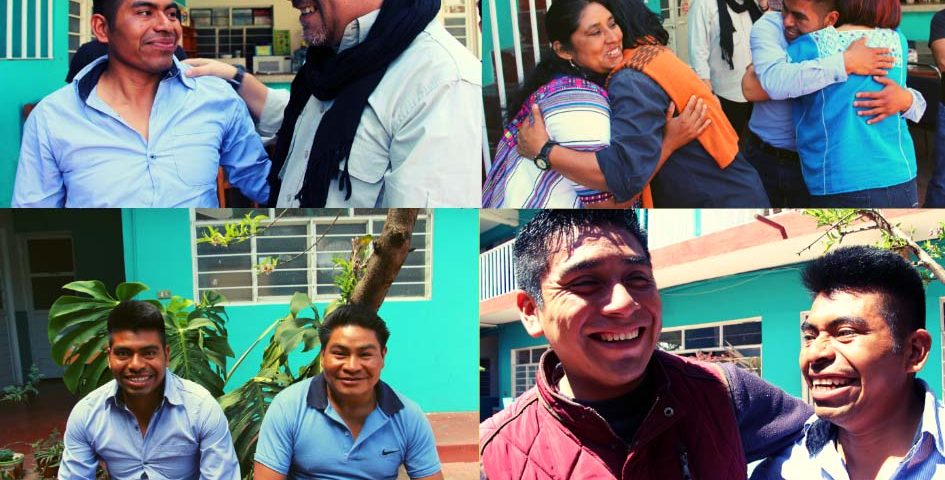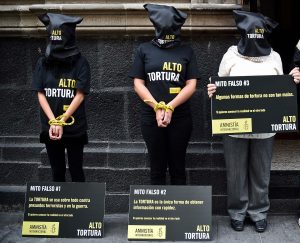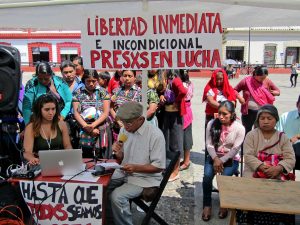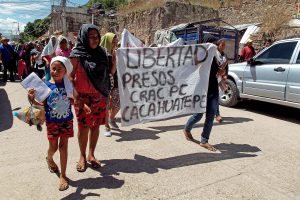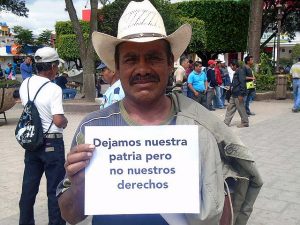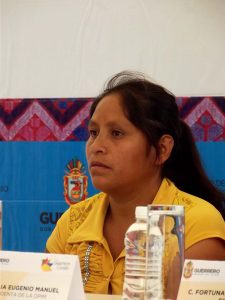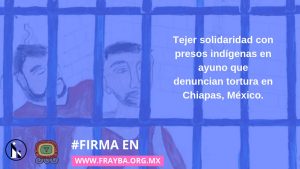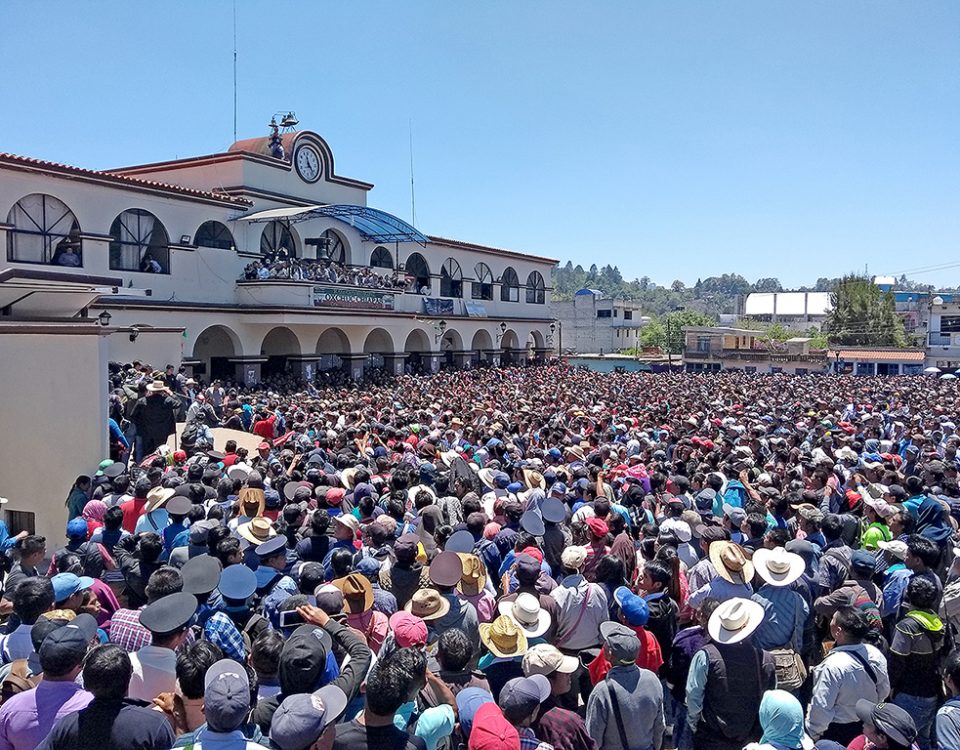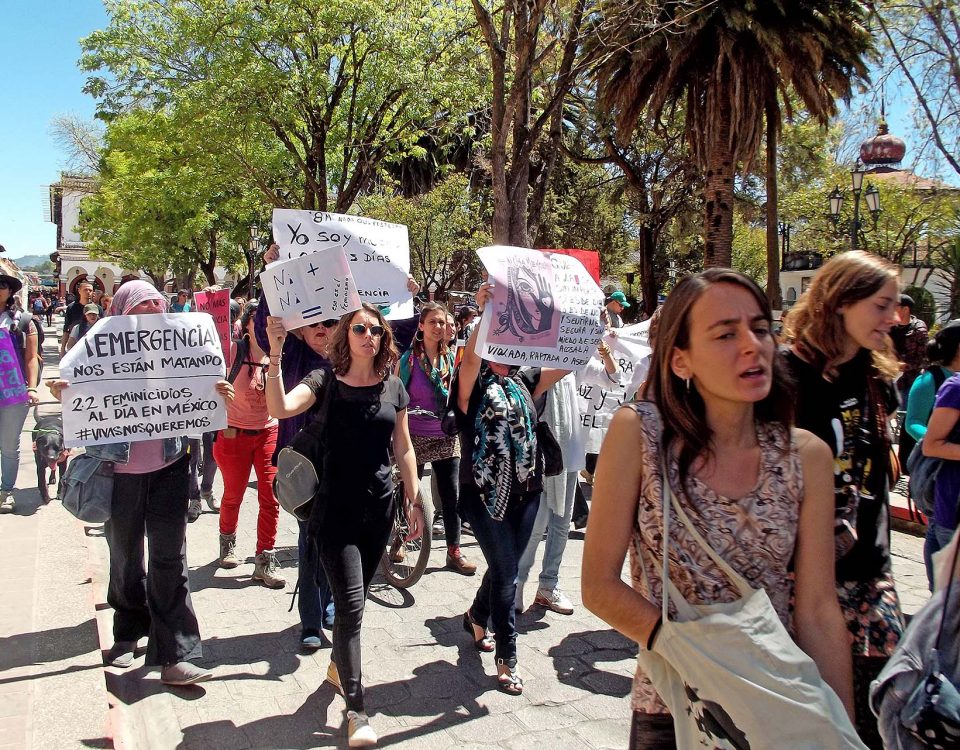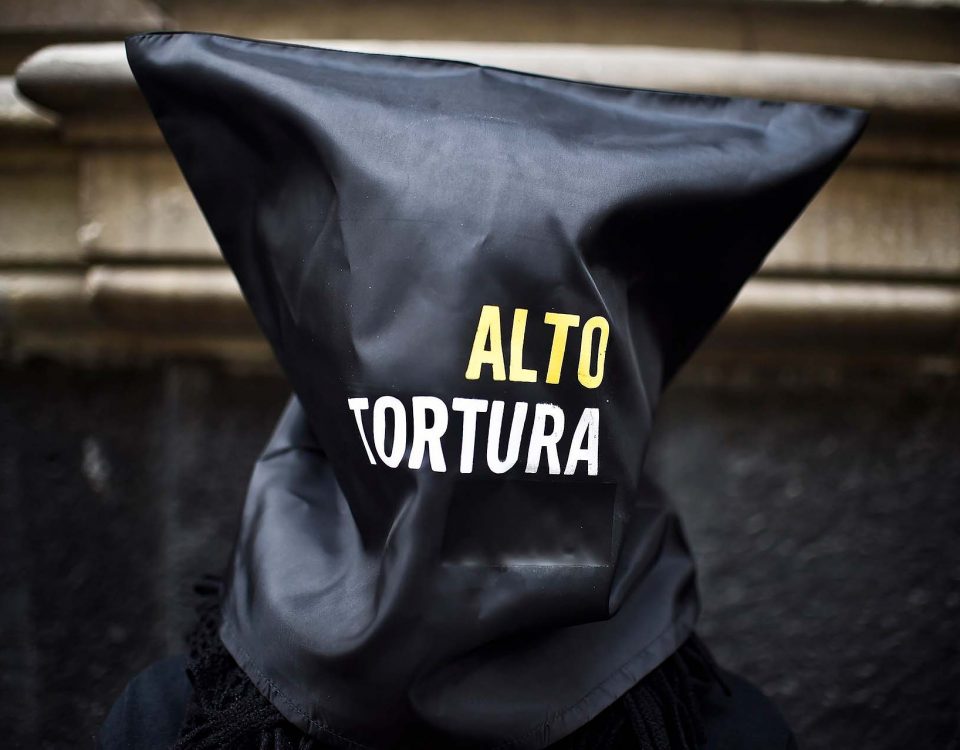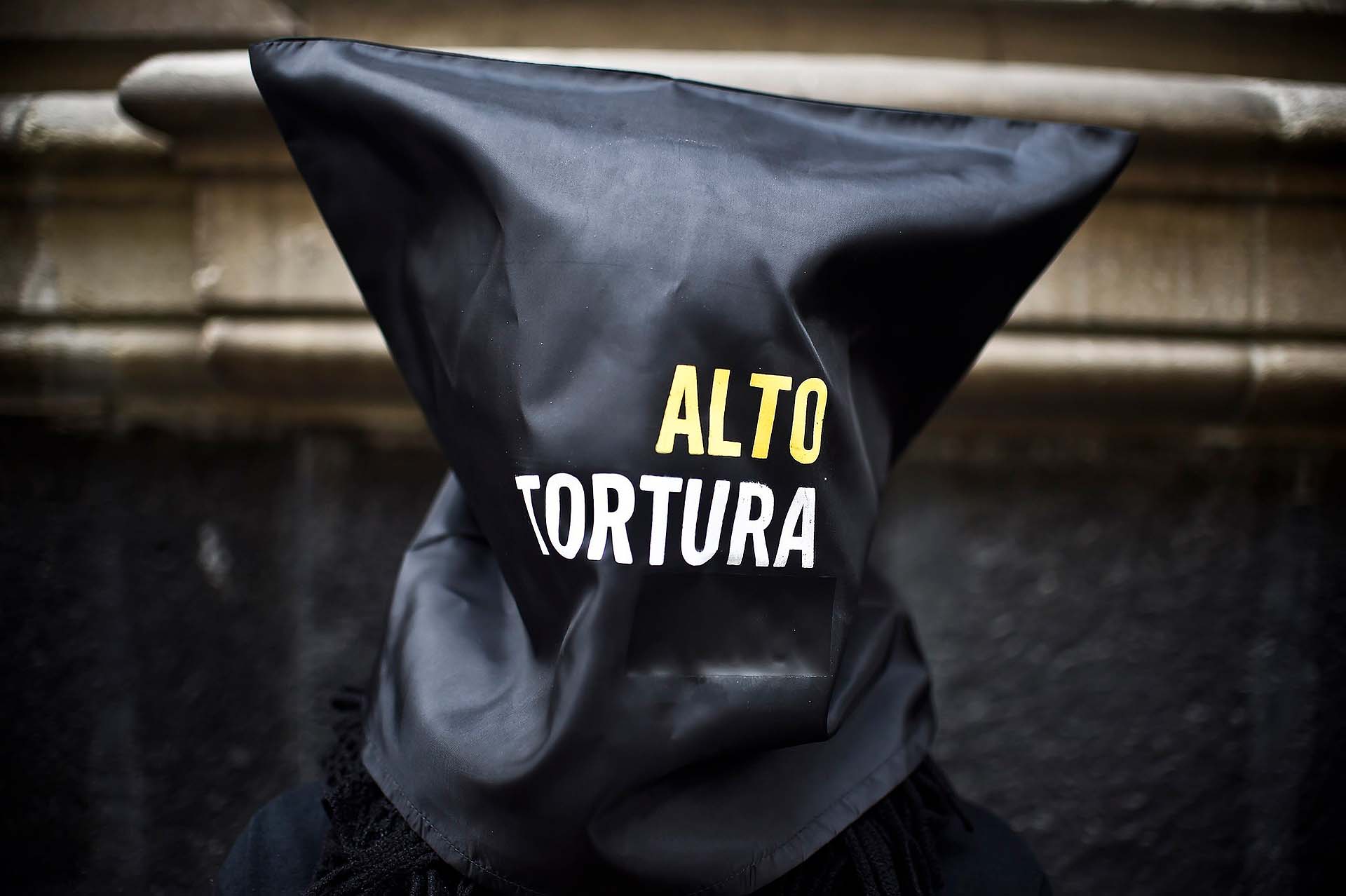
LATEST: Mexico: Six months after change of government
22/06/2019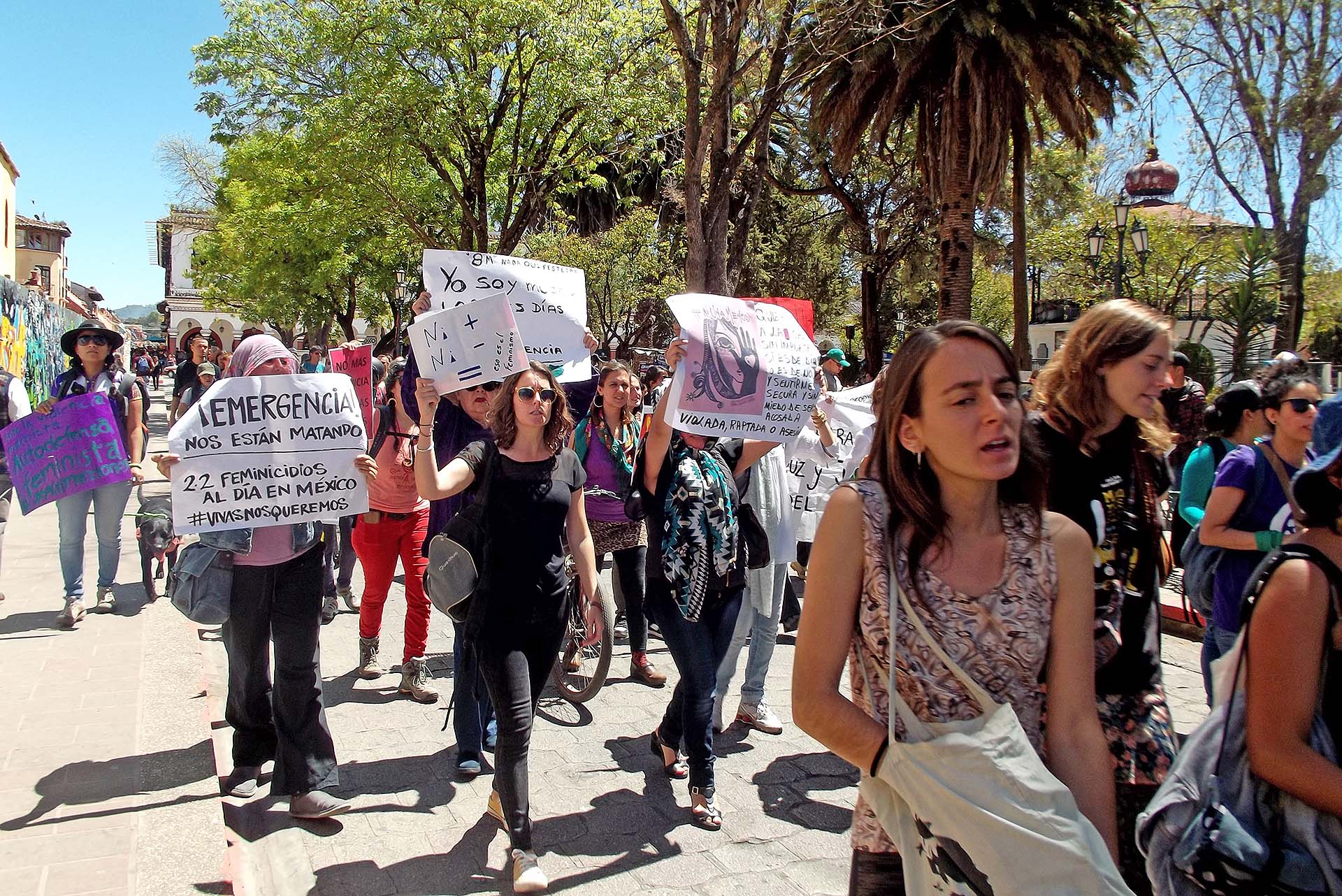
ARTICLE: #MeTooMX – The cry of women in a context of ever present violence
22/06/2019On May 17, the United Nations Committee against Torture (CAT) gave its verdict after an evaluation in April.
It issued 98 recommendations that the Mexican government agreed to analyze and work on: “Mexico will continue to be open to international scrutiny and will place special emphasis on the cooperation that the various organizations, agencies, and countries have offered, to make the existing legal framework effective to ensure the full enjoyment of human rights in Mexico, as well as to perfect it, when required.” The Mexican authorities will have a year to present new developments regarding compliance.
The Committee against Torture (CAT) consists of ten independent experts, who monitor the implementation of the Convention against Torture and Other Cruel, Inhuman or Degrading Treatment or Punishment (TCIDTP) by the States parties. This convention entered into force in 1987. All signatory countries must submit periodic reports to the Committee on the manner in which the rights contemplated in it are complied with. Initially, States must report one year after the accession has been signed, and then once every four years. The Committee examines each report and expresses its concerns and recommendations to the State party in the form of “concluding observations” (1).
In each of these presentations, a large number of networks, organizations and civil society put together “shadow” reports on the situation of torture in the country. An “Alternative Report of Civil Society Organizations of Mexico” was presented in April 2019. Its diagnosis notes that the current practice of torture in the country is “endemic” and “generalized”, highlighting that “from 2012 to date, the Mexican government has received 12 thousand complaints for acts of torture allegedly committed by the Federal Police, SEDENA, the Attorney General’s Office and the National Institute of Migration, among other agencies.”
Similarly, the results of the National Survey on the Population Deprived of Liberty, published by the State in 2017, show that the country is still in a serious crisis in terms of torture. It was “carried out in every prison in the country, which allows us to recognize the use of torture in the law enforcement system(2): 75.6% of people suffered psychological violence and 63.8% physical violence in the arrest(3), and when standing before the Public Ministry (PM), 49.4% were incommunicado(4), 39.4% received kicks or punches and more than 23% received blows with some object and injuries from crushing(5), among many other reports of violence.”
Furthermore, according to the Co-Rapporteur of the Commission for Mexico, Diego Rodriguez-Pinzon, the diagnosis highlighted that a climate of impunity predominates since only 7% of the crimes were reported and only 4.6% of the crimes investigated resulted in convictions. For its part, the Special Investigation Unit for the Crime of Torture of the Office of the Attorney General of the Republic, created in 2015, reported in February 2018 that it had opened 8,335 investigations for this crime, but had only brought criminal proceedings in 17 cases(6).
In the most recent evaluation before the CAT, Marta Delgado Peralta, Under- Secretary for Multilateral Affairs and Human Rights of the Ministry of Foreign Affairs of Mexico, stressed that with the change of government in December 2018, there is a new context in the country that coincides with “a new vision of the country, with full respect for human rights as a fundamental pillar.” She affirmed that the problem has diminished in the last two years. Regarding progress, she reported that in June of 2017 the General Law to Prevent, Investigate and Punish Torture and Other Cruel, Inhuman and Degrading Treatment (GLPTCIDT) was enacted. The purpose of this law is to distribute the powers of the different authorities to investigate, prosecute and punish torture, correctly typify this crime, and establish measures of attention, aid, assistance, protection and reparation for the surviving victims. However, to date, the fifth provision of the General Law that states that “the Attorney General of the Republic will have a period of one hundred and eighty days following the date on which this Decree comes into force, to issue the National Program to Prevent and Punish Torture and other Cruel, Inhuman or Degrading Treatment or Punishment” has not been complied with. Delgado Peralta acknowledged that the problem remains “difficult and critical” , particularly at the state level, and reiterated Mexico’s firm commitment to eradicate impunity and ensure that its institutions are free from torture.
Among the most vulnerable: the indigenous of the country
In an interview with SIPAZ, the lawyer of the Fray Bartolome de Las Casas Center for Human Rights (Frayba), Gilberto Hernandez said that breaking with corruption will be the biggest challenge to ensure that institutions are free from torture. Frayba documented that almost always the investigations against perpetrators of torture – mostly public prosecutors, prosecutors or ministerial police officers – are investigated by people from the same institutions. Among other points of concern, he mentioned that in November 2018, more than 100 civil organizations denounced the appointment of Jorge Luis Llaven Abarca by the former Governor of Chiapas, Manuel Velasco Coello, as new state prosecutor after holding the position of Secretariat of Security and Citizen Protection, despite several complaints against him, including some for torture. Both the National Commission for Human Rights (CNDH in its Spanish acronym)(7) and the State Human Rights Commission(8) issued recommendations that link him to these complaints.
“In Chiapas, despite the government’s messages that mention political will, we do not believe that the situation will improve in the coming years,” said Frayba. Since March 15, indigenous prisoners from five prisons of the state, and their relatives accompanied by civil organizations, began a series of serious actions to highlight their situation in an organized manner. Through a hunger strike, these prisoners demand their freedom, better prison conditions, and justice for acts of torture committed against them. Some of them have been imprisoned for 15 years without receiving a sentence.
Gilberto Hernandez explained that he has reviewed the files of the organized inmates, in which there is evidence of arbitrary detentions and torture as a method to force them to declare themselves guilty of crimes that they may not have committed. In response to the demands of the prisoners, the state government reviewed some investigation files and informed Frayba that it did not find information that showed that there was torture. The lawyer Hernandez noted that this is not the only case, but it is a problem at the (inter) national level. He stated that he did not know if this response is due to lack of political will, incapacity or as part of a strategy to wear down victims, relatives and lawyers in order to stop demanding that their human rights be respected. Both international bodies and civil society organizations agree that a structural factor that perpetuates impunity is the lack of independence, impartiality and effectiveness of the professionals in charge of carrying out the documentation and investigation of allegations of torture(9).
Many indigenous people deprived of their freedom do not report due to lack of knowlege or fear of retaliation against them ore their families. The majority of those who decide to do so are criminalized or pressured into desisting from their action. In addition, the documentation and investigation are carried out without observing international standards in the matter.
Limits to the implementation of protection mechanisms
One of these standards is the Istanbul Protocol, which was the first set of international standards to document torture and its consequences. The protocol is a manual that has been prepared to help states implement one of the most fundamental aspects of protecting individuals against torture: effective documentation. This documentation brings to light evidence of torture and ill-treatment so that torturers may be brought to justice. According to experts, this mechanism was “Mexicanized” through misuse “by the authorities that have transformed it into an instrument of impunity.”
According to the latest CAT report, a “specific mechanism that blocks the investigation and punishment of acts of torture and TCIDTP, invoked by the investigative authorities (ministerial), judicial and even by public human rights bodies (the Ombudsman system), are medical-psychological experts. The authorities often reduce the investigation of torture to the result of these internal expert opinions – erroneously called “Istanbul Protocols” – which are usually carried out belatedly by non-independent personnel and without adherence to the true Istanbul Protocol(10). This creates a vicious cycle: without expert opinion, the authorities usually consider that torture cannot be proven, but when subjected to a flawed appraisal, the foreseeable result is a negative opinion, which is also considered as an indicator that there is no torture.
This has resulted in people being frequently found guilty on the basis of confessions obtained under torture or ill-treatment admitted by judges on the grounds that the victim had not proven torture(11).
All this occurs despite the fact that international law establishes that, once an allegation of torture or ill-treatment has been presented, it is up to the State to prove that it did not occur, and to the judges to order the immediate elimination of the evidence.
One example of these irregularities is the case of the prisoners of the Council of Ejidos and Communities Opposed to La Parota Dam (CECOP in its Spanish acronym), defenders of human rights of the State of Guerrero, of whom at least eight were tortured after a huge operation in January 2018. The Tlachinollan Human Rights Center considered that “the public prosecutor’s office obtained evidence which has been taken to trial through torture, arbitrary detentions and incommunicado detention.” The aggression suffered by the detained and tortured persons included beatings, death threats, simulation of extrajudicial execution, sexual torture and physical torture. Although torture was alleged since the beginning of the trial, there has been no progress in the investigation(12).
The use of the judicial apparatus in the criminalization of human rights defenders
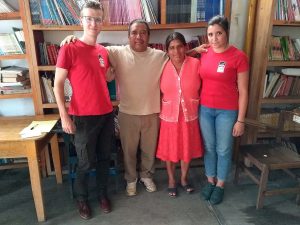
SIPAZ visits Pablo López Alavéz, a Zapotec community defender arbitrarily detained in 2010 and criminalized for his work defending the forests, at CERESO No. 2 in the town of Etla, Oaxaca © SIPAZ
Another major concern also present in the case of CECOP prisoners is the criminalization of social protest, which has led to the imprisonment of dozens of human rights defenders in recent years.
In the state of Oaxaca, which is characterized by a long history of criminalization of social movements, in 2017 and 2018, at least 141 defenders were arbitrarily detained, according to the Feminist Civil Association for Parliamentary Dialogue and Oaxaca Consortium for Equity. This same source registered a total of 93 attacks against defenders and journalists in the first quarter of 2019.
The UN Working Group on Arbitrary Detentions (WGAD) has issued eight Opinions on human rights defenders in Mexico(13), of which six cases are from Oaxaca. “In its Opinion 56/2015(14), the WG recognizes a pattern of arbitrary detentions against defenders in Mexico, mostly indigenous, systematically documenting incommunicado detention, torture and serious violations of due process”(15).
Civil society organizations and different international institutions are also concerned about the issue of public security, as, “the federal government and the Congress of the Union have advanced two proposals that would increase the risk of torture and other human rights violations: the creation of a militarized National Guard” and the increase in the list of crimes that merit informal preventive detention: “This initiative is particularly alarming because it is contrary to the presumption of innocence and due process, and because of the foreseeable negative impact it will have on populations already vulnerable to arbitrary detention.”
Migrants: fear of reporting abuses due to their immigration status
Being a migrant, asylum seeker, woman, part of the LGBTIQ community, victim of trafficking, child, adolescent, or indigenous person, increases your chance of suffering a violation of rights by authorities, organized crime, or by someone else in Mexico.
The organization Without Borders, after 15 years of monitoring, reported that torture, ill-treatment and massive corruption occurs mainly in Migration Stations, particularly in two of the largest in the country (Tapachula and Iztapalapa): “In Mexico, the migration policy employed in recent years has involved human rights violations against migrants and asylum seekers, largely linked to the deprivation of liberty for immigration reasons. “
Due to this, civil organizations have recommended that the Mexican State carry out “legislative and structural reforms in migration policy to design mechanisms that renounce detention as a systematic and widespread practice, so that immigration detention becomes a last resort and not the rule.”
Different effects for women and members of the LGBTIQ community in prison situations
In Mexico, seven out of ten women in the country have suffered some kind of sexual violence. Women have begun to face another kind of violence from the “war on drugs”: homicides in public spaces with firearms. The war on drugs also has resulted in an increase of the number of drug crimes, or crimes “of production, possession, trafficking, proselytizing and other acts in the matter of narcotics”, which has resulted in more income for the prisons. Both detention and imprisonment are scenarios that constantly enable acts of torture and CIDTP(16).
According to what has been documented by civil organizations when representing, accompanying or studying the situation of women deprived of their liberty, the Mexican penitentiary system fails to apply the gender perspective, leaving women in a situation of vulnerability that includes the absence of services adapted to the needs of their gender(17), the former being TCIDTP that generates potentially tortuous situations(18).
In relation to the medical-psychological expertise for women, the Mexican Commission for the Defense and Promotion of Human Rights (CMDPDH) has identified the absence of expert opinions that incorporate a gender perspective.
The Office of the Rapporteur on Torture has expressed alarm due to the large number of complaints of torture and ill-treatment of women, including sexual violence, adding that, in most cases, there is no investigation or cases are minimized by the authorities, and survivors are re-victimized when they report or undergo medical examinations(19).
The community of lesbian, gay, bisexual, transgender, intersex and queer people (LGBTIQ)continues to face homophobia and harmful stereotypes. “Within the Mexican prisons they are constant victims of violence (…) the State Commission of the Federal District noted the urgent need for protection actions and protocols for LGBTI persons in prison to prevent aggression and discrimination against them.”
One example and exception to the impunity rule are the cases of Ines Fernandez Ortega and Valentina Rosendo Cantu, two indigenous Me’phaa women from Guerrero, sexually tortured by members of the armed forces in 2002. The Mexican State was sentenced by the International Court of Human Rights on the case and there are lawsuits against the torturers, and a historic sentence was issued in June 2018, by holding members of the military responsible for acts of sexual torture for the first time. However, after the sentence, the accused have resorted to an injunction; that is, the sentence can still be reversed. In any case, civil society organizations noted that international pressure was fundamental in order to issue a ruling with a gender and intercultural perspective(20).
The long road to eradicating torture and the importance of the participation of victims, family members and civil society
In April of this year, with the objective of “discussing common challenges, improving, strengthening and overcoming obstacles in the fight against torture”, 16 lawyers from ten organizations from Guatemala, El Salvador, Honduras, Colombia, Venezuela, Peru, Paraguay, Chile, Argentina and Mexico formed the Group of Litigants against Torture in Latin America. The group has the support and advice of the World Organization against Torture (WOAT), based in Geneva, Switzerland.
They confirmed that the practice of torture is endemic, that it occurs in many forms in all nations, so they united to be able to “carry out common actions, as a single group (…) what we are doing is something unique, since we know it has never happened on the continent, which is the starting point of what will be a group of litigants or lawyers who fight against torture and impunity at a regional level in Latin America.”
The Frayba lawyer Gilberto Hernandez, who coordinates the group, pointed out in an interview that the expert lawyers will accompany the cases of this crime before national and international courts in a coordinated manner, and that different strategies will be shared in the fight against torture. One that is considered positive is access to the United Nations so that they can pronounce on specific cases as a form of pressure on the Mexican State, since the process through the Inter-American Court of Human Rights is long and slow (for example, the case Ines Fernandez Ortega and Valentina Rosendo Cantu).
Organization among victims, survivors, their families and civil society is also important in the process towards greater respect for human rights. This organization was evident in the creation of a General Law of Torture, which currently establishes that civil society will participate in the National Program to Prevent and Punish Torture, providing its diagnoses and perspectives (Article 69). Currently a large group of organizations that walk hand in hand with the victims collaborates in the construction of a proposal from civil society for the National Program to Prevent and Punish Torture. It is important to remember that legal changes only permeate in reality if there is a context demanding this over time and in a constant and pointed manner(21).
Sources
- United Nations: Seventh periodic report that Mexico was to submit in 2016 under article 19 of the Convention
- National Survey of the Private Population of Liberty (ENPOL 2016), Main Reults.
- Ibíd., p. 25-26
- Ibíd., p. 35
- Ibíd., p. 36
- ProDH Center: Ten Key Questions about the General Law against Torture
- CNDH, Recommendation 26/2002
- State Commission of Human Rights of Chiapas, Recommendation 1/2002. Not available online. State Commission for Human Rights of Chiapas, Recommendation 7/2005. Not available online. See “We demand the dismissal of Jorge Luis Llaven Abarca as Attorney General of the State of Chiapas”, December 11, 2018.
- ALTERNATIVE REPORT OF THE ORGANIZATIONS OF THE CIVIL SOCIETY OF MEXICO TO THE UN COMMITTEE AGAINST TORTURE 2012-2019
- Inter-American Commission on Human Rights, Situation of human rights in Mexico (2016), para. 308-310.
- Report of the Special Rapporteur on Torture and Other Cruel, Inhuman or Degrading Treatment or Punishment: Mission to Mexico, A / HRC / 28/68 / Add.3, December 29, 2014, para. 55-56.
- ALTERNATIVE REPORT OF THE ORGANIZATIONS OF CIVIL SOCIETY OF MEXICO TO THE UN COMMITTEE AGAINST TORTURE 2012-2019
- Opinión 23/2014 Damián Gallardo Martínez, opinión 18/2015: Pedro Canché Herrera, opinión 19/2015: Librado Baños Rodríguez, opinión 55/2015: Enrique Guerrero Aviña, opinión 56/2015: Nestora Salgado García, opinión 17/2016: 25 integrantes de Frente Popular Revolucionario (ahora Sol Rojo), opinión 23/2017: Pablo López Alavéz, y opinión: 24/ 2017 Mario Olivera Osorio.
- Opinión 56/2015: Nestora Salgado García, diciembre 2015,
- Ibíd., párr. 42.
- ALTERNATIVE REPORT OF THE ORGANIZATIONS OF THE CIVIL SOCIETY OF MEXICO TO THE UN COMMITTEE AGAINST TORTURE 2012-2019
- Understand: spaces, infrastructure and adequate medical care (especially for pregnant and lactating women) with regular access to gynecologists and other specialized personnel.
- The female condition is combined with other elements that generate greater vulnerability for women, so the deprivation of liberty entails a greater risk for them of suffering torture or ill treatment. See, CAT, General Comment No. 2, January 24, 2008, Doc. CAT / C / GC / 2, para. 22
- Report of the Special Rapporteur on Torture and Other Cruel, Inhuman or Degrading Treatment or Punishment: Mission to Mexico, A / HRC / 28/68 / Add.3, December 29, 2014, para. 28
- In said judgment the district judge recognizes that the simple violation committed by military elements constitutes an act of torture since it seeks to inflict and humiliate the woman irreparably. In addition, the environment of coercion generated by the armed forces is recognized, which produced an evident power asymmetry between the military elements and Valentina, who was in a vulnerable state as she was a woman, indigenous and because she was a minor, to armed military elements.
- 10 Key Questions about the General Law against Torture,, ProDH Center

